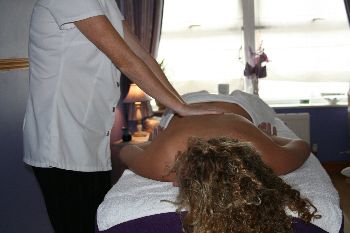Swedish Body Massage in Bristol – Relax, Restore & Rebalance, can be defined as the systematic and manual manipulation of the body’s soft tissue for therapeutic purposes promoting health and well-being.
A typical full-body Swedish Massage session lasts for about one hour, many therapists will offer shorter sessions for treating specific areas such as backs, shoulders and necks or any areas giving discomfort, aches or pains. On the first visit clients are asked a number of questions concerning general well-being, injuries and medical conditions that the therapist should know about, in order to determine if there are any contra-indications (physical conditions that would prohibit or limit a massage treatment).
Reduces stress and anxiety by relaxing both mind and body
This massage is performed with oil (grapeseed, sweet almond, coconut, etc. to suit the client’s individual needs). A good oil will nourish the skin and allow a free-flowing movement as it allows the hands to glide over the area. The therapist will sense responses but will also ask the client about the strength of their touch. Remember, "no pain, no gain" holds no truth in massage. If in discomfort or hurting, the client should feel free to ask the therapist to modify their treatment.
The benefits of Massage may include the following.
- Reduces stress and anxiety by relaxing both mind and body
- It helps increase joint mobility and it increases peristalsis in the large intestine, helping to relieve constipation, colic and gas
- It improves circulation to the skin, increased nutrition to the cells and encouraging cell regeneration. Also, Improves elasticity of the skin
- It increases sebum production, helping to improve the skin’s suppleness and resistance to infection
- Strengthens the immune system, due to increase in white blood cells
- Can reduce oedemas (excess fluid in the tissue) by increasing lymphatic drainage and the removal of waste from the system
- Relieves muscular tightness, stiffness, spasms and restrictions in the muscle tissue.
- It increases blood circulation bringing more oxygen and nutrients into the muscle. This reduces muscle fatigue and soreness.
It is generally believed that the word massage derives from the Arabic ’mass’ or ’Mas’h’ meaning to press softly. As an art it must be about as old as man himself because to hold or rub an injured part is an instinctive reaction to pain or discomfort. Today, massage is a multidimensional skill encompassing a wide variety of ever evolving techniques, many of which have their roots in the Swedish system.
During the holistic approach, the therapist considers, not only the symptoms and medical history of the client but also their lifestyle and circumstances and so tries to alleviate the root cause of the disease, or imbalance, thereby caring for the whole person and aiding them to heal themselves. Book your Swedish Massage Bristol today !

